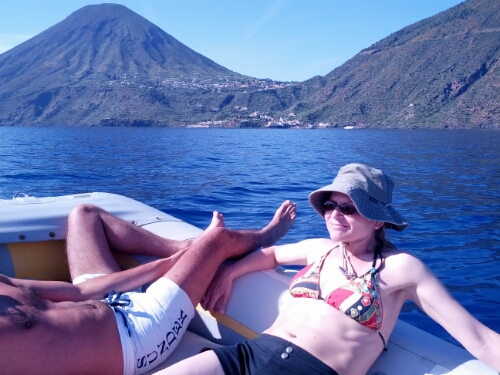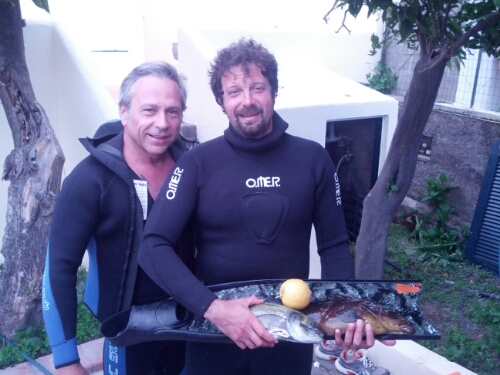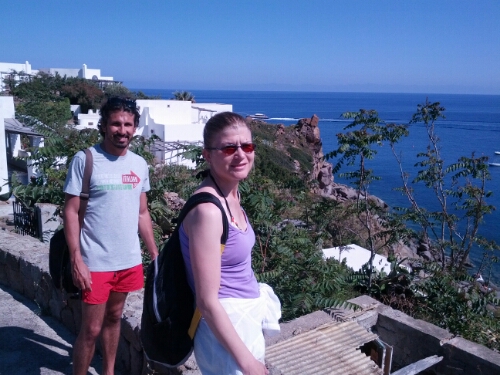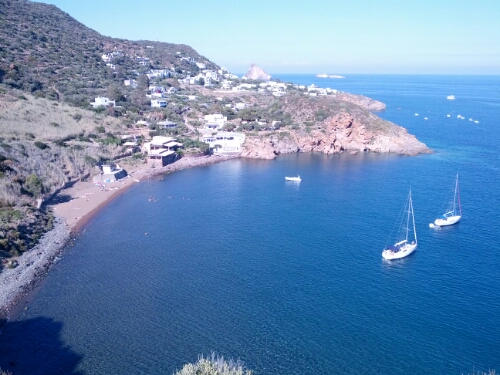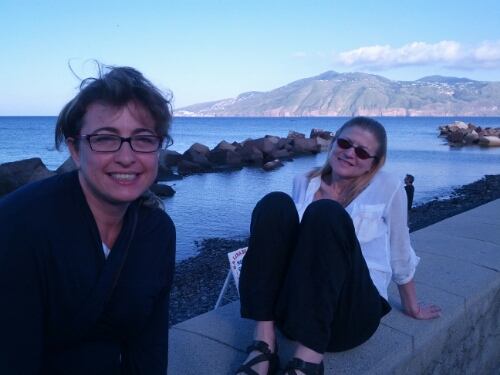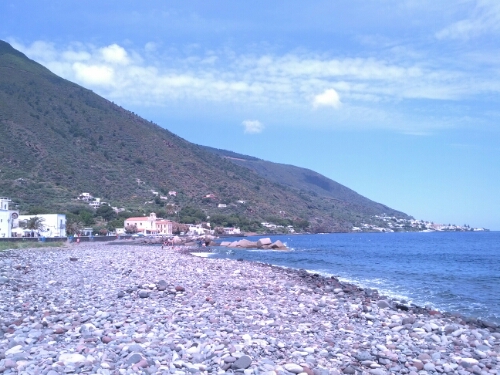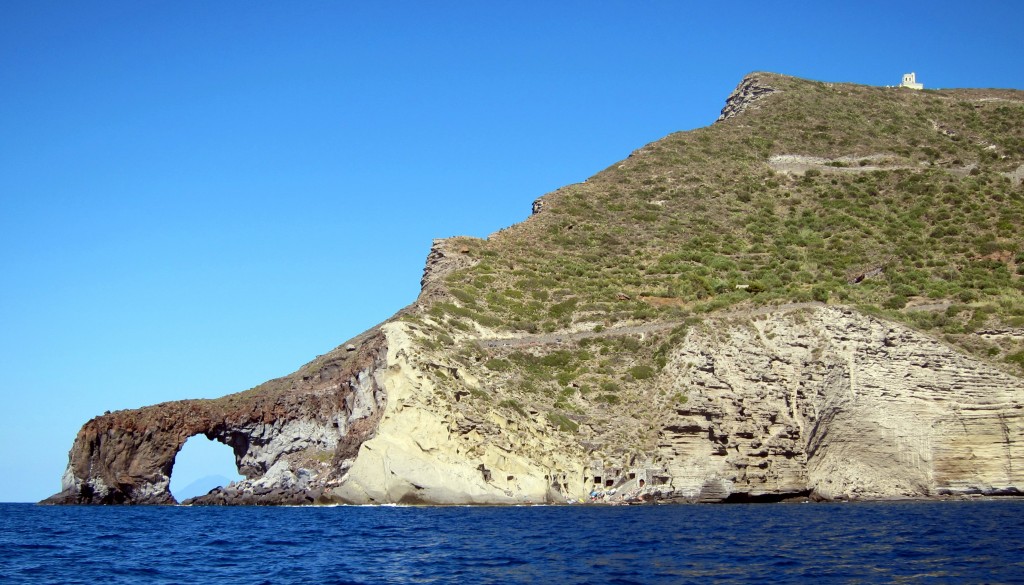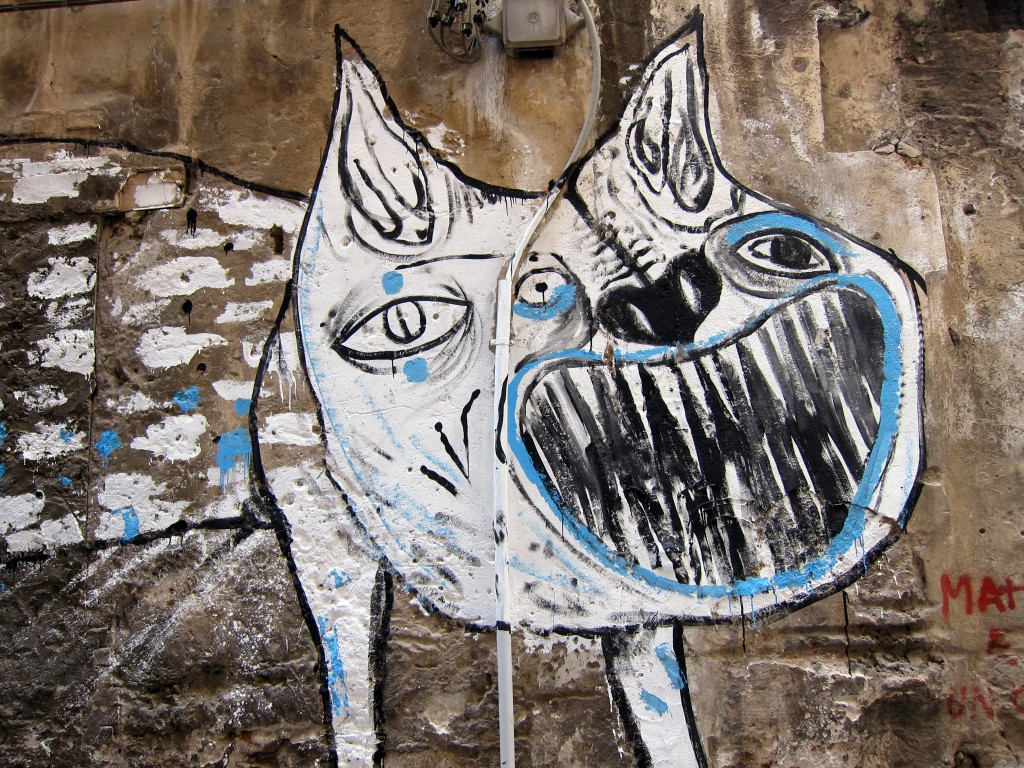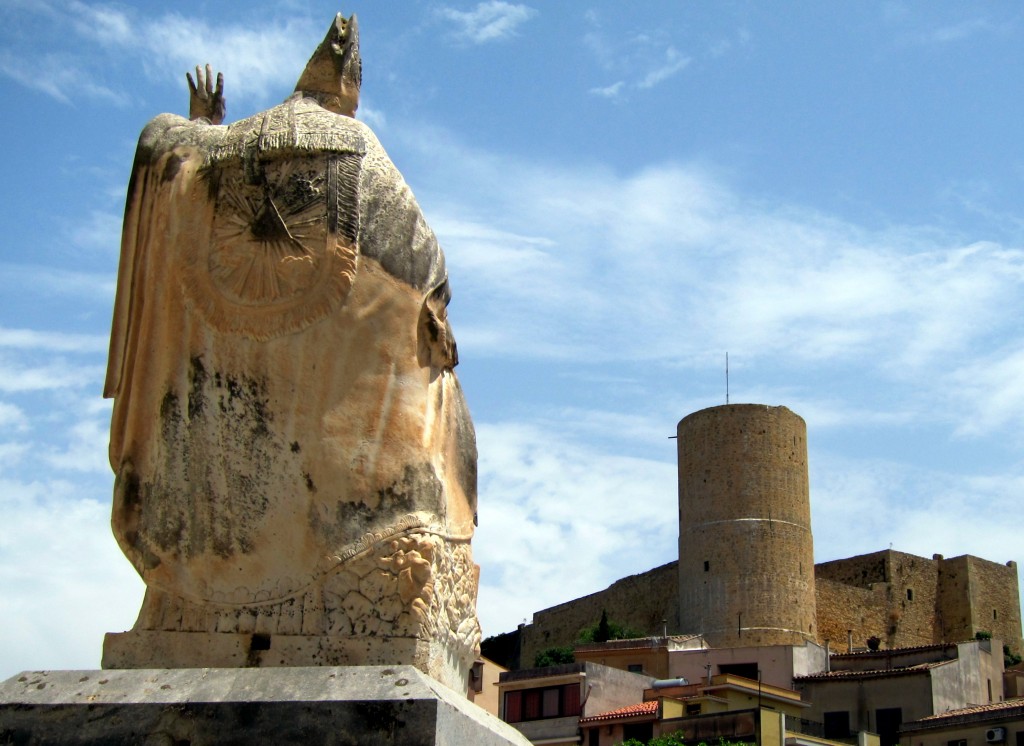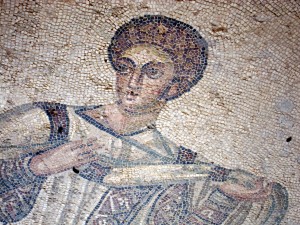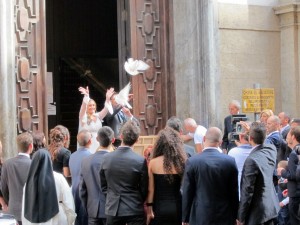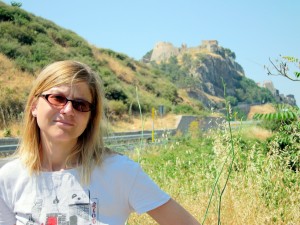While in Sicily last month, I flew the Mavic Pro quite a bit. This video covers much of the footage from the time spent near Mount Etna.
Tag: sicily
Island Hopping
Wonderful Salina
We are having a great time catching up with friends in Salina. A lot of relaxing going on here.
Laura organized a tour of a local winery, which was very interesting. They also produce capers, using this machine.
Otherwise, it has been a lot of sun, sand, cooking, eating, drinking, and just chilling. Just what we needed after France.
While I was listening to Italian language lessons before going to Sicily in July, I found myself wondering about the number 17, or in Italian, diciassette. Specifically, I was curious why, at 17, the structure of how you say the number flips, where you say the 10 part first, and then you say the number part. For 11 to 16, you say the 10 part (dieci) and then the number added to ten to make the number you are trying to convey. So, undici for 11; literally, one (uno) + ten (dieci). Then, dodici for 12 (due + dieci). Followed by tredici for 13 (tre + dieci). When you get to 17, you flip it, so that you say the 10 part first, and then the 7.
Why is this interesting? Well, languages similar to Italian do it earlier in the series of numbers, or at least they do it in a different place. Spanish, which is closely related to Italian, makes this change at 16, not 17. French makes the change at 17, the same as Italian, but English, we do it at 13. Portuguese changes at 16, but this could be because of its close proximity to Spanish. Dutch and German, each closely related to English, also makes their changes at 13. None of this seems to affect the major Eastern European languages, like Polish, Czech, and Russian, who simply start at 11 to say the first digit and then the ten’s digit. Perhaps most interesting is that Latin, the parent language to Italian, French, and Spanish, makes the change at 18, going from sedecim (16) to septendecim (17) to duodeviginti (18) to undeviginti (19).
Anyway, this topic was still going through my mind while I made my way down Mount Etna, passing this scene at top of the Valle de Bove among the wispy clouds at about 8,500 feet, far away from any other people, hoping my feet didn’t slip or the hillside didn’t give way and kill me with a 1,500 foot tumble down into the valley floor below. I stopped to snap this shot right when I started to notice living things appearing among the volcanic stones. After such a bleak landscape for several hours, any color was a real treat.
Other pictures from our July 2012 Sicily trip are available here.
On the north coast of Sicily, just to the east of Cefalu near Tusa, we stopped by the ruins of Halaesa, which are perched on a prominent hill above the Tusa River and this beautiful example of the Italian interstate road system, which they call the autostrada. Between Messina and Palermo, the autostrada plunged into hills like a needle and thread through cloth. Tunnels run into the multiple kilometers, and the whole thing seems relatively space-age and strikingly beautiful. Due to the higher cost of construction, this stretch of Sicilian autostrada is a toll road, but it was cheaper than other similar autostrada we took in northern Italy in 2009.
More photos from our July 2012 trip to Sicily are available here.
This is a massive sea arch near Pollara on the island of Salina, off the north coast of Sicily. By luck, if you squint, you can see the island of Stromboli through the arch. Laura and family took us out on their boat for a circumnavigation of Salina, and this point is on the far side of the island, opposite of Santa Marina, where the ferry docks and where we spent most of our time.
This picture was taken from the water, floating above an ancient, collapsed caldera. Salina has two old volcanos on it, and this was a third. As you can see, it is a very beautiful place. Many thanks to Laura for making it possible for us to see it.
More photos from our July trip to Sicily and Salina are available here.
This is one of my favorite photos from the Sicily trip. In it, you can see the northern section of the central Sicilian town of Enna in the foreground, with rolling hills and a sunset, dreamy and faded in the western sky.
We ended up in Enna by accident. We couldn’t decide where to stay when heading toward Syracusa from the western side of the island, and Enna opened up a possibility because there was a hostel there with an opening and a pretty cheap rate for a quick overnight stay. A week before we were set to arrive, however, the booking agency emailed to let us know the hostel was overbooked, so they moved our reservation to the much fancier Hotel Sicilia Enna and paid the difference.
Thus began a fortuitous evening where we arrived at the Castello di Lombardia just at sunset and were able to enjoy scenes like the photo above, ate dinner in a tiny little traditional restaurant (Grotta Assurra) run by a cute and caring elderly couple (he cooked and she took our order – there were only 5 or so tables in the whole place, and only 2 were occupied), and observed modern teenage life on a Friday evening, when kids come from surrounding towns to hang out in the same square, giggle at one another, and stare at little screens in the dark.
It is worth noting that, historically speaking, Enna could be considered a metaphor for all of Sicily, in that it is old and has been conquered a lot. People have lived on the 2800 foot high, mostly sheer, hill since at least the 14th century BC. Occupying such a prominent position over the surrounding countryside, while only being a day’s journey from each of the 3 major coasts, made Enna a popular target, and it was captured by the Sicani, then the Siculi, then the Greeks, then the Carthaginians, then the Romans, then by the Byzantines, Islamic forces, Normans, and on and on. Many of the captures involved treachery rather than military might, and the town has been known by other names, such a Henna and Castrogiovanni, at least until Mussolini gave it the current name.
More photos of our July 2012 trip to Sicily are available here.
This is a photo of me and Kath with the mountaintop fortress/town of Erice behind us. It was taken by Iolanda, proprietress of Al Frantoio (“The Crusher,” in English), the B&B we stayed in in Valderice, a larger town just down the hill from Erice. For some reason, this one of the only pictures we have of Erice high up on the hill, though we have quite a few looking down on surrounding towns.
We really enjoyed our stay at Al Frantoio. If you find yourself in northwest Sicily and would like to stay somewhere that is very comfortable and convenient to many sights, all combined with gracious hospitality and sea views, consider booking some nights at Al Frantoio. Their website is http://www.alfrantoiovalderice.it
One of our favorite Sicilian towns is Santo Stefano di Camastra, located on the Tyrrhenian Sea, on the north coast of the island. We stopped on the main street (SS113) through town, having read that a good selection of pottery is available, at reasonable prices. Well, some of the pottery was interesting, but as we turned the corner and entered the back streets, especially those that shoot off of Via Vittorio Emanuele, we really started to get a sense of quiet town life.
Sitting in the main square, watching old women in twos and threes heading into Mass, listening to the old men swap stories under the olive trees by the Societa Operaia, and following the young families with babies in carriages strolling slowly down Via Roma at sunset, all of things dug deeper into authenticity than we had experienced up to that point. There was something ageless about it all, balanced, and hopefully sustainable.
Another interesting thing we discovered in Santo Stefano di Camastra that kept reappearing throughout the rest of the trip is the little island of a house, sandwiched between streets. This photo of Kath in front of one of these house (who knows how old it is?) reminds me of our many walks winding through town, moving through an ancient grid while noticing as many as 13 wifi access points at a time coming up on my phone (all, unfortunately, password protected). The juxtaposition of modernity with an a pattern of life from antiquity, meshed, kept me thinking about the place for days after we headed down the road.
More photos from the July 2012 Sicily trip are here.
While on our steamy walk around a sweltering Palermo, Kath and I kept seeing interesting, surreal (and maybe Cubist?) graffiti in various places. I’m used to the Banksy-like stuff that you find in most larger cities these days, but this was something altogether different and exciting. I couldn’t stop looking at it, and now that I’m home with photos of it, I’m still drawn to it. And a lot of it was big, taking up an entire wall.
Apparently, Palermo has a pretty strong underground art movement. Maybe it is only fitting, then, that the word graffiti actually comes from the Italian word graffiato, which is to scratch or scribble.
More pictures from the Sicily trip can be seen here.
Before heading out to see the ruins of Gibellina (and what could be called the ruins of Gibellina Nuova), Kath and stopped in nearby Salemi, an administrative center in the western part of the province of Trapani, about 45 miles southwest of Palermo. This photo shows the view from the municipal traffic circle up to the castle at the top of the hill, where Garibaldi announced the annexation of Sicily to the Kingdom of Italy in 1860. For a short period, Salemi was the capital of Sicily, at least until Garibaldi moved on to complete his conquest of the rest of the island.
We were only in Salemi for a couple of hours, but the more I read about the place, the more interesting I find it. For example, I’m sure, at some future post, I will talk about the decrepit outdoor elevator system we saw there (which you can partially see from Google Street View). However, I just found out about a real bargain, which I love to pass along when I find them.
Anyone for a 1 Euro house in Italy? For the last few years, Salemi has been getting a little bit of press for a scheme to sell houses in the historic town center for only 1 Euro each. Sound like a sweet deal? Well, there is only a bit of a catch. The area of town where the houses are available was wrecked by the 1968 earthquake that decimated the region (and flattened nearby Gibellina). So, while you are only laying out 1 Euro for the deed, you are also required to promise to restore the structure to local, modern building codes. And, even for the homes with the least amount of damage, the cost for these renovations would be at least 100,000 Euro.
More pics from the trip are available here.
The first thing we saw when entering the hilltop, medieval town of Erice, located in northwest Sicily, was the Chiesa Madre (Mother Church) and its accompanying, separate bell tower. Above the entrance to the church is a beautiful window, done in the rose window style. According to the date on the window, it is only about 60 years old (650 years younger than the church).
To get this picture, we went up in the bell tower (which was originally a “vendetta tower” and begun a couple of years before the church). I stuck my camera out one of the openings in the ancient stairwell and zoomed as far as I would dare with one hand.
I love the easy way Italians, and especially Sicilians, mix old and new cultural items. I’m sure there was some debate over the design of the art to be added to such a cultural treasure, but when it was time to add it, everything fit like a glove. You see this over and over again in Sicily: respect for antiquity but the aversion to treat it as something totally of the past. I guess when you are surrounded by structures and detritus of a dozen civilizations that cross a few millennia, all of it is something more than just a background set to your life that you aren’t allowed to touch. They aren’t afraid to be wrong, and more often than not, their changes are something more than right.
More pictures of the trip can be seen here.
This photo kinda speaks for itself. Two houses, on the side of a volcano. One of them is a little too close to a recent lava flow, and the other was spared. (Well, somewhat. It looked abandoned, and whoever lived there was probably required to abandon it during the eruption.)
I snapped this image on my way up to Refugio Sapienza, on the first day of my Mount Etna climb. Both of these houses were built in a zone that had been the subject of recent eruptions. The landscape was almost alpine, and I wonder how either housebuilder could have expected anything else but that they would have their house destroyed by the volcano someday.
In the winter, this is a snowy wonderland, and it is probably pretty easy to forget the threat that looms from above. In the summer, with all of the old and new lava around, it is impossible to ignore the inevitable. Or, if you are a house, get out of the way.
More photos of the Mount Etna climb and Sicily trip are available here.
Probably the best thing that we almost skipped but didn’t during the Sicily trip was a visit to the UNESCO World Heritage Site of Villa Romana del Casale, located just outside of Piazza Armerina.
At first glance, this place looked like an expensive waste of time, the sort of place where you have to fight your way through busloads of tourists in order to get a glimpse of the antiquity, or where the magic and the mystery of what you are seeing vanished due to the hassle of getting to it or the presentation of the thing. I’m happy to say that Villa Romana del Casale had none of those problems. Instead, you were so transfixed on the amazing scene of tile floors that went on and on that the world around you just faded away.
The house was a Roman palace probably expanded over the years starting the first century AD and eventually reaching its peak toward the end of the 3rd century, when it was probably owned by Marcus Aurelius Maximianus, a co-emperor of the Roman Empire. Beautiful tilework covers the floor of almost the entire structure, containing scenes of hunting parties, fishing expeditions, girls in bikinis exercising, mythical creatures, and personal portraits of the ruling family.
The nearly 4000 square meters of tile floors were rediscovered buried under mud in the early-20th century, and excavations took place from 1929 into the 1970s. The river near the villa, which frequently flooded, probably saved the tile floors by keeping them a secret from other groups that used the building for hundreds of years after the Romans abandoned it.
More photos of the Villa Romana del Casale and Sicily are available here.
The end of our Sicily trip was spent on the island of Salina, as guests of our friend Laura and her family. Salina is located in the Aeolian Islands, which is about 25 miles north of the island of Sicily.
Salina is an extremely relaxing and beautiful place. We enjoyed perfect weather, tranquil, blue seas, and pleasant companionship, getting to meet Laura’s family and friends.
Many evenings were spent simply staring out to sea, watching the fading light reflect off the neighboring island of Lipari, and sipping a local wine. To me, this photo looks like Kath can’t believe her good fortune.
More photos from Salina and the trip are available here.
Some of the best Greek archaeological sites in the world are not in Greece. By the mid-6th century BC, the Greeks had built towns and exerted influence throughout much of the Mediterranean and all of the Black Sea. Modern southern France, Corsica, Libya, Italy, Turkey, and Egypt had Greek towns, and the more successful and permanent the town, the more likely that a temple complex would be built in the area.
Sicily has been conquered by many civilizations through the millennia, including the Phoenicians, Carthaginians, Romans, Vandals, Arabs, and on and on, but no civilization left as many impressive ruins as the Greeks, and Selinunte is one of the best places in Sicily to get a real sense of the scale of these structures.
In this photo, Kath is located in front of Temple E (the Temple of Hera), a structure that was largely reconstructed decades ago. Other ruins litter the site, the product of ancient earthquakes. These temples are a hill next to the original town of Selinus, which was destroyed by the Carthaginians in 250 BC.
More photos from the trip are available here.
Everywhere we travel, we always learn about interesting local traditions that we didn’t have a clue about before we showed up and viewed them first-hand. In Australia, an example would be a game of “two-up” played on ANZAC Day (the Australian version of Memorial Day). While traveling through the Peruvian Andes, the two ceramic bulls or house located on the tiles of the roof always captured my attention.
In Sicily, one of the important traditions (and possibly a more recent one) is to release doves after a wedding ceremony. (This may be a more general Italian tradition, but I never saw it in action when we were in mainland Italy in 2009.) We must have arrived during wedding season, because we kept running into them everywhere we went, but while in Palermo, we happened to catch a bride and groom as they were leaving the church.
Before hopping into a very expensive, new Maserati and roaring away, the bride released at least a dozen doves into the air while surrounded by their friends and family. I lucked out on this shot and actually capture a few in mid-flight. I love the mix of guests in this picture, the nun and the priest, the latest fashion and the giant doors of the church. The moment felt as real as the picture indicates, and the bride’s joy is tangible through her smile.
You can see the full album of images from our trip here.
Soon after leaving Catania on a 9-day trip around Sicily, we were lost. Hopelessly and desperately lost. This is despite having a detailed road atlas and 2 GPS devices.
In all fairness, it wasn’t entirely our fault. We had a route planned from Enna to our destination near Cefalu, one which took us through the historic town of Castelbuono, all while traveling on charming backroads, taking in some rural scenery after days spent in the city. Unfortunately, soon after leaving Enna, our route was blocked by a rockslide, and we were forced to find another way over the rolling, dry hills and into the Madonie Mountains.
At first, the thin ribbon of road we followed north looked decent, if a little underused. A half-hour later, however, after passing several spots where the entire road had washed out and no longer being able to leave first gear, we knew we should have pulled over and gotten our Italian dictionary out for the road signs we passed with the giant exclamation point on them.
The maddening thing was that we could see small villages in the distance, but what was left of the road never seemed to go close to them. Occasionally, we would pass a farmer on a tractor, and the astonished look on his face while we passed told us all we needed to know. Each washout we somehow survived made it more and more difficult to justify turning around, until, eventually, we both knew that our only way out was to push ahead. At one point, Kath started to take stock of our water and food, in case we had to spend the night among the dusty wheat fields, and I questioned how long it would take to trek to one of the distant villages to get help.
Then, as quickly as we got into the mess, we were out of it. The backs of the exclamation point signs started appearing on the left side of the road, and within minutes, we were at an unmarked intersection. By taking the better road at each intersection, we eventually found a regular highway and continued on to Castelbuono.
This picture shows Kath after harrowing road experience, in front of some random castle. I can’t really find the relief in her face with this photo, but I know it was there.
You can see the full album of images from our trip here.
After getting off of the plane in Catania, Laura let me use an old water bottle in her car, and we stopped by the beach on the way into town, where a nice Italian guy helped me fill it with seawater, wondering what I was planning to do with it. I didn’t know enough Italian to tell him I wanted to pour it down into a caldera at the top of volcanic Mount Etna.
A little more than 24 hours later, I stood at over 6,000 feet on the side of Mount Etna, having completed a more than 20 mile hike from sea-level, all while acquiring some of the worst blisters and thirst I’ve ever experienced. After crashing as the only guest of a hotel that night, I resumed the climb in the morning, with a little help with a gondola for the next 2,000 feet.
Finally, at about 9,000 feet in elevation but 1,500 short of my goal, I snapped this picture before eventually yielding to my damaged feet and choosing safety over the summit. Before walking down along the ridge of the Valle de Bove, I found a nearby caldera and offered the seawater to the volcano, watching the liquid disappear into the tiny specks of pumice.
You can see the full album of images from our trip here.
